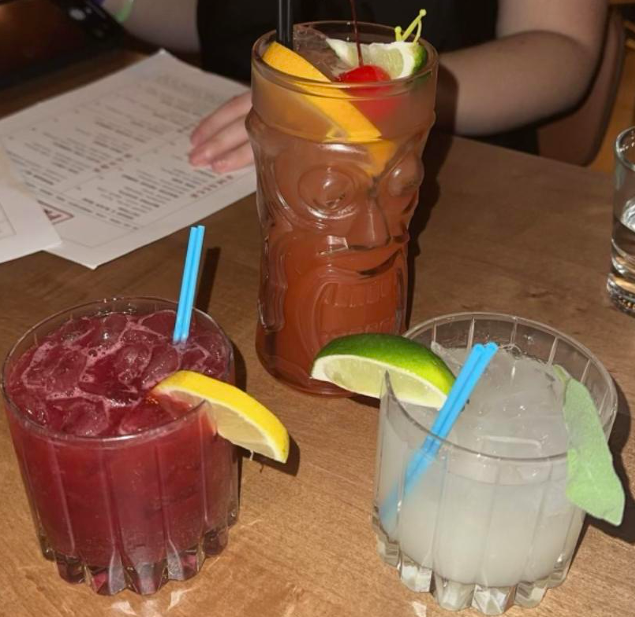
Lager, ale, stout, IPA, hops, head, pilsner, malt, lite, ice, wheat – the world of beer can seem daunting to the uninitiated.
It can be tempting to dismiss it as all pretty much the same, and all pretty bad. This guide exists for that reason: for those who think they might enjoy beer but don’t know where to start and for those who have never really given beer a chance but are now willing to give it the old college try. For you, we present this basic guide to beer.
Beer, along with wine and mead, is among the oldest alcoholic drinks that survive to the present day, dating back to the earliest human civilizations, and perhaps even earlier. Today, after water and tea, beer is the third most consumed beverage on Earth. As a result, beer has developed into a staggering variety of drinks, with a few common elements.
Nearly all beer is produced by fermenting a wort of water, grains, malt, hops and yeast in varying quantities. This appetizing mix is then left to its own devices for several weeks or months until the yeast has consumed enough sugar and produced enough alcohol to turn the wort into the beverage fans know and love.
The vast majority of modern beers can be roughly divided into one of two categories, lagers and ales. The difference between the two is in how they are brewed, but we’ll talk more about that later. By and large, lagers tend to be lighter and bubblier, while ales tend to be heavier and foamier, though there are exceptions to this rule.
Of the two types of beer, ales are far older. Ales have been around in more or less their current form since the Middle Ages. They are brewed at room temperature with top-fermenting yeast that forms colonies at the top of cask.
Lagers, by contrast, are brewed or matured in colder conditions, usually with bottom-fermenting yeast. Lagers are relative newcomers to the stage of beer. First brewed in the 15th century, lagers have become a staple of American beers, and are some of the most common and popular beers in the world.
All of this history is surely fascinating, but the question of which beer is best for you remains unanswered. We will dive into describing ales first. As a general rule for dealing with ales, the lighter the color, the more bitter the beer; the darker the color, the smoother and the heavier.
On the light end of that spectrum is the India Pale Ale, or IPA. IPAs contain far more hops than your average beer, making them much bitterer than other kinds of ale. The reason for this is that IPAs were originally brewed to survive on ships making the long voyage from Britain, around the horn of Africa to India, which is where they get their name. IPAs are light, bitter hoppy beers, good for hot summer days or simply for those who prefer a little bite to their drink.
At the opposite end of the spectrum are stouts and porters. These are heavy, dark beers almost black in color that often have a distinctly milky or chocolatey flavor. Smooth and rich, stouts and porters are ideal if you want a more filling beer or something to go along with a savory meal. Think Guinness for the prototypical stout.
In between IPAs and stouts are pale ales, light and hoppy but less bitter than IPAs, ideal for people who like light beers, but for when an IPA might be a bit too much. Likewise, red and brown ales are a dark, clear, reddish-brown in color, and while still heavy and smooth, they are nowhere near as dense and creamy as a stout.
Among lagers there is still variety to be had, and some of the beers most people are most familiar with are lagers. Coors, Budweiser, Samuel Adams and Pabst Blue Ribbon are all American lagers that most people have probably heard of. American lagers are generally pale, hoppy beers that embody many of the main aspects of lagers in general.
Lagers from other parts of the world can be bitterer, like the Dutch Heineken, or more smooth and plain, like the Japanese Asahi. Derived from the American style of lagers, light lagers have become popular in recent years, and are known for their even paler color and lower calorie count.
This brings me to the final evolution of the American lager, the ice beer. Ice beer, exemplified in Natural Ice, is made by partially freezing the beer and filtering out the ice crystals. Because water has a lower freezing temperature than alcohol, the result is a relatively low flavor beer with a high alcohol content and low price point, making it a favorite amongst those looking for quantity on a budget.
There is still a lot more to the world of beer. Every beer is different and their categorization is imperfect, but that doesn’t necessarily matter. A person certainly does not need to know where in the family tree their favorite beer falls in order to enjoy it.
These labels and descriptions are meant to serve as a guideline to help people find the kinds of beers they like, and to explore similar beers they might not have considered otherwise. I hope this guide has given you a starting point to do your own exploring, to find out what you do and don’t like and to start to enjoy the wide variety of beer out there.
Chad Stoughton can be reached at [email protected].



















Peter Lewicke • Sep 19, 2016 at 9:22 am
There is a lot more to the subject of brewed beverages han this, and most of the information in this article appears to be based on marketing campaigns, rather than on the essential facts. The write of this article appears to subscribe to the belief that ale is a type of beer. Ale is not a type of beer; both are yeast brewed beverages. The essential difference is that traditional ale is top brewed and hops are not added, and beer is bottom brewed and has hops. The biggest other errors include the matter of porter and stour; porter is a strong dark beer, and stout started out as “stout porter”. Neither of those is an ale.
There is a great deal more, but this article is not a good place to start learning about beer and certainly not about ale.